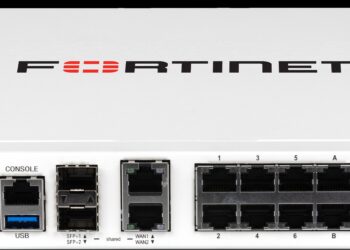As we venture further into 2024, it’s clear that the digital landscape is transforming at an unprecedented rate. With this evolution comes new threats, making network security not just a matter of IT concern but a foundational business imperative. P J Networks is at the forefront of this transformative journey, guiding businesses through the complexities of modern network security with a blend of expertise, empathy, and cutting-edge solutions.
The Evolving Threat Landscape
The digital threats facing businesses have changed drastically. Gone are the days when a simple antivirus program would suffice. The threats are now sophisticated, targeted, and relentless. Cybercriminals are exploiting every possible vulnerability, making it crucial for businesses to stay a step ahead.
The Importance of Network Security for Modern Businesses
Network security isn’t just about protecting data; it’s about safeguarding the trust of your customers, maintaining the integrity of your brand, and ensuring the continuity of your operations. It’s a holistic concern that affects every facet of your organization.
Setting the Stage for Best Practices
At P J Networks, we understand the stakes. We focus on empowering businesses with best practices and cutting-edge solutions designed to not only address current threats but to anticipate future challenges as well.
Establishing a Secure Network Infrastructure
Design Principles for Secure Networks
Building a secure network starts with foundational principles like network segmentation, which isolates systems to contain potential breaches, the principle of least privilege, ensuring individuals only have access necessary for their roles, and redundancy to protect against data loss.
Advanced Security Technologies to Implement
The deployment of next-gen firewalls, intrusion detection systems (IDS), and secure routers provides a robust defense mechanism against external threats while ensuring your network’s integrity.
Regular Audits and Compliance Checks
Continuous monitoring and regular compliance checks are not optional. They are critical for identifying vulnerabilities and ensuring that your network meets the latest security standards.
Cultivating a Culture of Security Awareness
Employee Training Programs
Customized security awareness programs can significantly enhance your team’s ability to prevent, detect, and respond to cyber threats effectively.
Phishing and Social Engineering Defense Mechanisms
Equipping staff with the knowledge to recognize and avoid phishing attempts and social engineering tactics is crucial for safeguarding sensitive information.
Incident Response Preparedness
Preparing your team for a swift and coordinated response can make all the difference in mitigating the impact of a security breach.
Enhancing Data Protection and Privacy Measures
Encryption and Data Masking Techniques
Protecting data in transit and at rest using encryption and data masking is a best practice that adds an essential layer of security.
Access Control Policies and Authentication Mechanisms
Implementing robust access controls, such as multi-factor authentication (MFA) and role-based access control (RBAC), is fundamental in preventing unauthorized access.
Complying with Global Data Protection Regulations
Understanding and adhering to global data protection regulations like GDPR and CCPA protects not just your customers’ data but also your organization’s reputation.
Embracing Cutting-Edge Technologies Safely
Secure Cloud Computing Practices
Selecting the right cloud provider and implementing stringent cloud security protocols is essential in today’s interconnected environment.
IoT Security Management
As IoT devices proliferate, securing these devices and their connections to your network is a necessity.
AI and Machine Learning for Threat Detection
Leveraging AI and machine learning can transform your security strategy from reactive to proactive, anticipating and neutralizing threats before they materialize.
Conducting Regular Security Assessments and Incident Management
Penetration Testing and Vulnerability Scanning
Regularly testing your defenses and scanning for vulnerabilities enables you to fortify your network against potential attacks.
Creating a Robust Incident Response Plan
A well-designed incident response plan ensures minimal disruption to your business operations in the event of a security breach.
Learning from Past Security Breaches
Studying past security incidents provides invaluable insights that can help prevent future breaches.
Conclusion
In the realm of network security, complacency is the enemy. The best practices outlined here are not a one-time checklist but a continuous journey towards resilience and vigilance. P J Networks is committed to partnering with businesses to navigate this journey, ensuring that your digital frontiers are not just protected but thriving.
Frequently Asked Questions (FAQs)
What are the first steps a business should take to improve its network security in 2024?
Begin with a comprehensive risk assessment to identify vulnerabilities and prioritize them based on potential impact.
How often should network security audits be conducted?
At a minimum, annual audits are recommended, though more frequent audits may be necessary depending on your business’s size and the sensitivity of the data handled.
What are the most common network security mistakes made by businesses?
Underestimating the sophistication of cyber threats and failing to cultivate a culture of security awareness are among the most common oversights.
How can small businesses with limited budgets improve their network security?
Focusing on foundational security practices like regular software updates, basic employee training, and leveraging free or low-cost security tools can significantly enhance a small business’s security posture.
What role does AI play in network security, and how can businesses leverage it?
AI can play a transformative role in network security by enabling organizations to detect anomalies and threats in real-time, providing a level of insight and automation previously unattainable.





